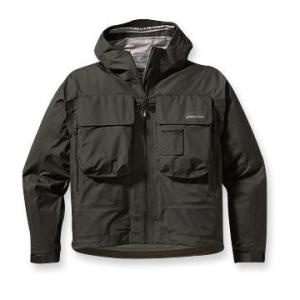Category Archives: Fly Fishing
Sage ONE Rods
With the holidays right around the corner, I thought I would show ya’ll a product that you might find on an angler’s wish list. Last August, Sage announced the release of their new rod series for 2012: ONE. Sage claims that this rod was three years in the making. It is constructed from Sage’s Konnetic technology, and is the ideal rod for both experienced and novice anglers. Other features of the rod include:
-Fast action
-Fuji ceramic stripping guides
-Hard chromed snake guides
-High grade, custom tapered, shaped cork handles
-Walnut wood and Golden Bronze-colored aluminum anodized freshwater reel seat
-Weights 6 through 10 have an all Golden Bronze colored aluminum anodized reel seat
-Black powder coated aluminum rod tube with Sage medallion
While I own a rod that is a fifth of the price of a ONE rod (715-745$), I can still wish. Click the above photo for more information on Sage’s website.
The River Why
Here is the trailer for The River Why, a new film that is currently being screened in select cities. The movie is an adaptation of David James Duncan’s 1983 novel of the same name. It stars Zach Gilford, William Hurt, and Amber Heard. Judging by the trailer, the movie contains some beautiful shots of fishing in Oregon. I guess you can say it’s a more modern version of A River Runs Through It. Plus, if anyone is a Friday Night Lights fan, does a movie get much better than Matt Saracen fishing?
Once in a Blue Moon
Video
I know this video is old, but here is the trailer for Once in a Blue Moon. The video documents the adventures of fishing in New Zealand. I wish I was there right now. Enjoy.
History of Fly Fishing in North America
United States anglers are thought to be the first anglers to use artificial lures for bass fishing. Prior to that, most anglers used live bait.
Anglers began to develop fly patterns (artificial lures) to fish for specific species of bass. Eventually, each fly pattern began to be associated with a specific species of fish.
Anglers, such as Theodore Gordon, during the late 19th century began using flies to fish the Catskill Mountains of New York. They used the flies to fish the trout filled streams and rivers of the area such as the Beaverkill and the Willowemoc.
These anglers developed new fly patterns, and often wrote about the popularity of fly fishing in the area and the United States. Charles F. Orvis, the founder of Orvis, helped to popularize fly fishing as a sport. He designed new reels and fly designs. Fly fishing historian Jim Brown described Ovis’ 1874 reel as the, “ benchmark of American reel design.” The Orvis company began to supply Americans all across the U.S. with fly fishing equipment.
The popularity of fly fishing peaked in the early 1920s in the Northeast and the Midwest. Ernest Hemingway helped to popularize the sport by writing about it. After the 1920s fly fishing’s popularity decreased. However, in the 1950s with the help of fiberglass rods, synthetic fly lines, and monofilament leaders, fly fishing became popular again.
Patagonia SST Jacket
If you have recently come into some money and are into fly fishing I suggest purchasing Patagoina’s Fall 2011 SST Jacket. On Patagoina’s website the jacket retails for $449, but it is well worth the investment. Besides the jacket being beautiful, it offers:
- Lightweight, highly breathable and durable 3-layer nylon double ripstop fabric, with a waterproof/ breathable H2No® barrier and a Deluge® DWR (durable water repellent) finish; all seams are sealed
- Integrated hood with single-pull adjustment
- Waterproof, corrosion resistant ririAQUAzip® front handwarmer pocket and back pockets
- Large gusseted chest pockets are waterproof (set high for wading, with inside tippet pockets, large back pocket); forceps stash inside left chest pocket
- Reverse StretchCoat® cuffs; Y-Joint™ sleeves and anatomically curved elbows
- Two Beastie D-rings on front, one on back; hidden rod holder; double belt loop at lower back
- Drawcord at hem, fabric at hem is mesh to allow for drainage
- 3-layer, 3.5-oz 40-denier 100% nylon double ripstop with a waterproof/breathable H2No® barrier and a Deluge® DWR (durable water repellent) finish. Cuffs: Reverse StretchCoat
Fly Fishing is a Joke
This is a beautiful video made by Henry Harrison. This was his thesis for the MFA program in Science and Natural History Filmmaking at Montana State University. Besides its aesthetic appeal, the video does an excellent job of understanding the draw of fly fishing.



